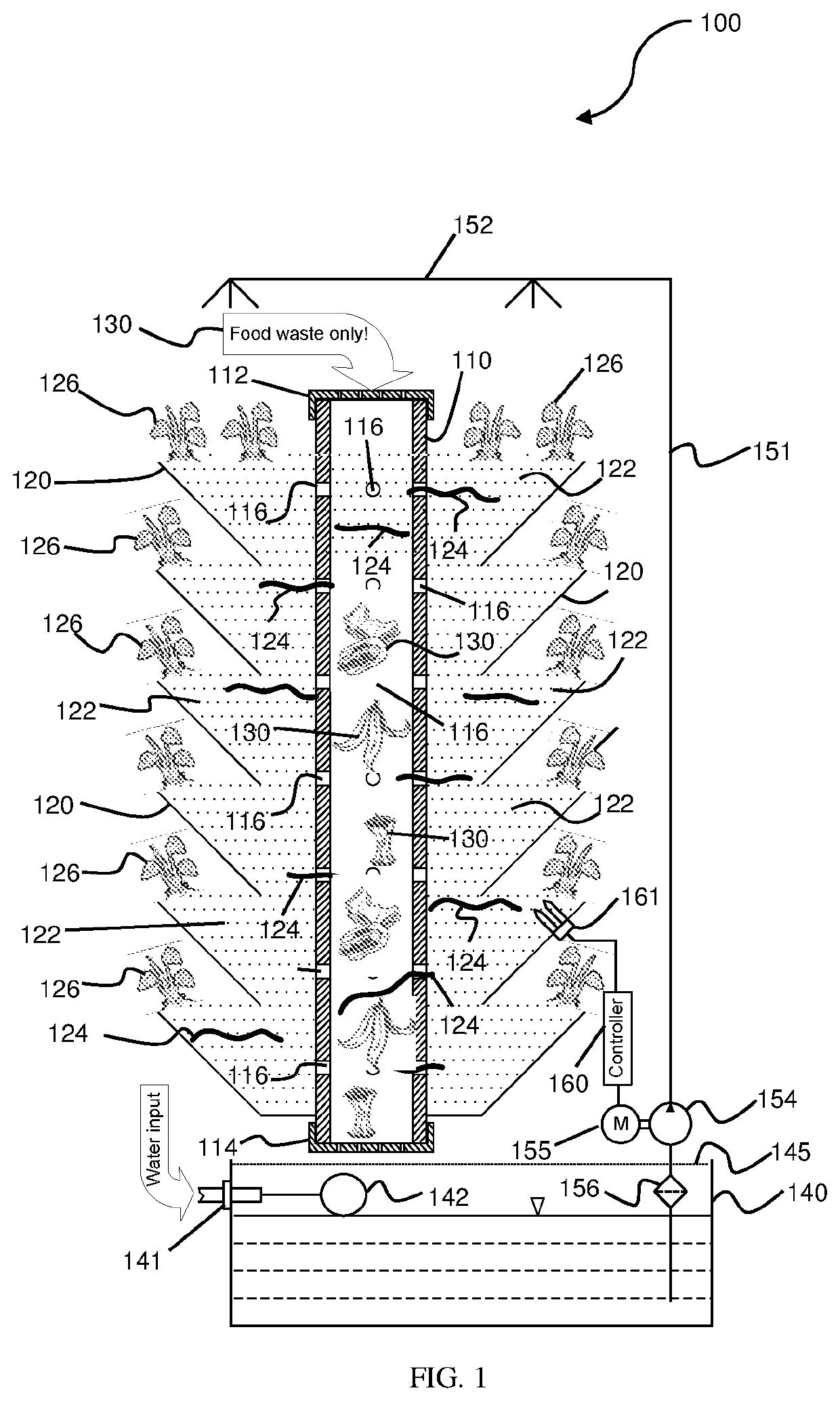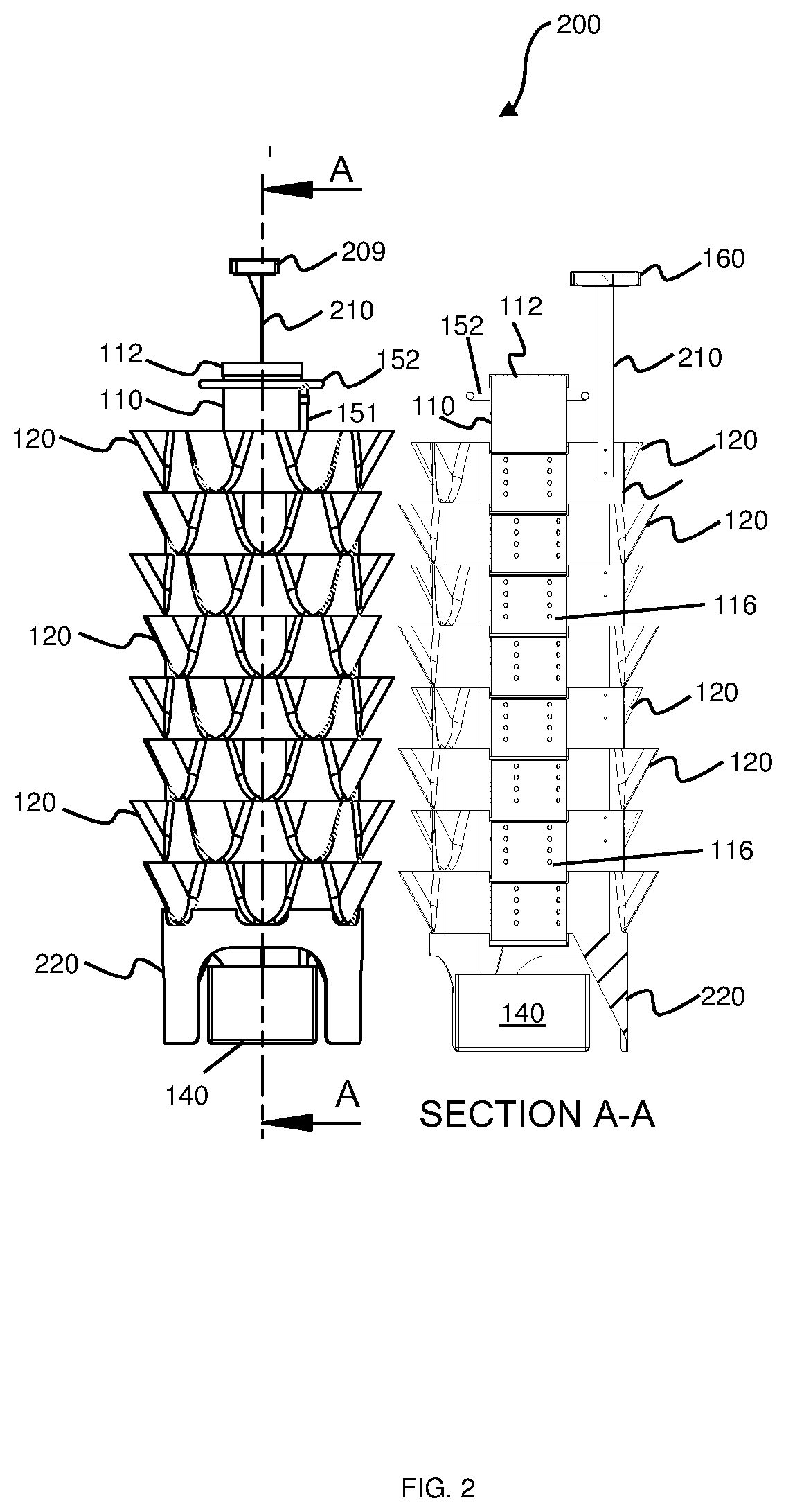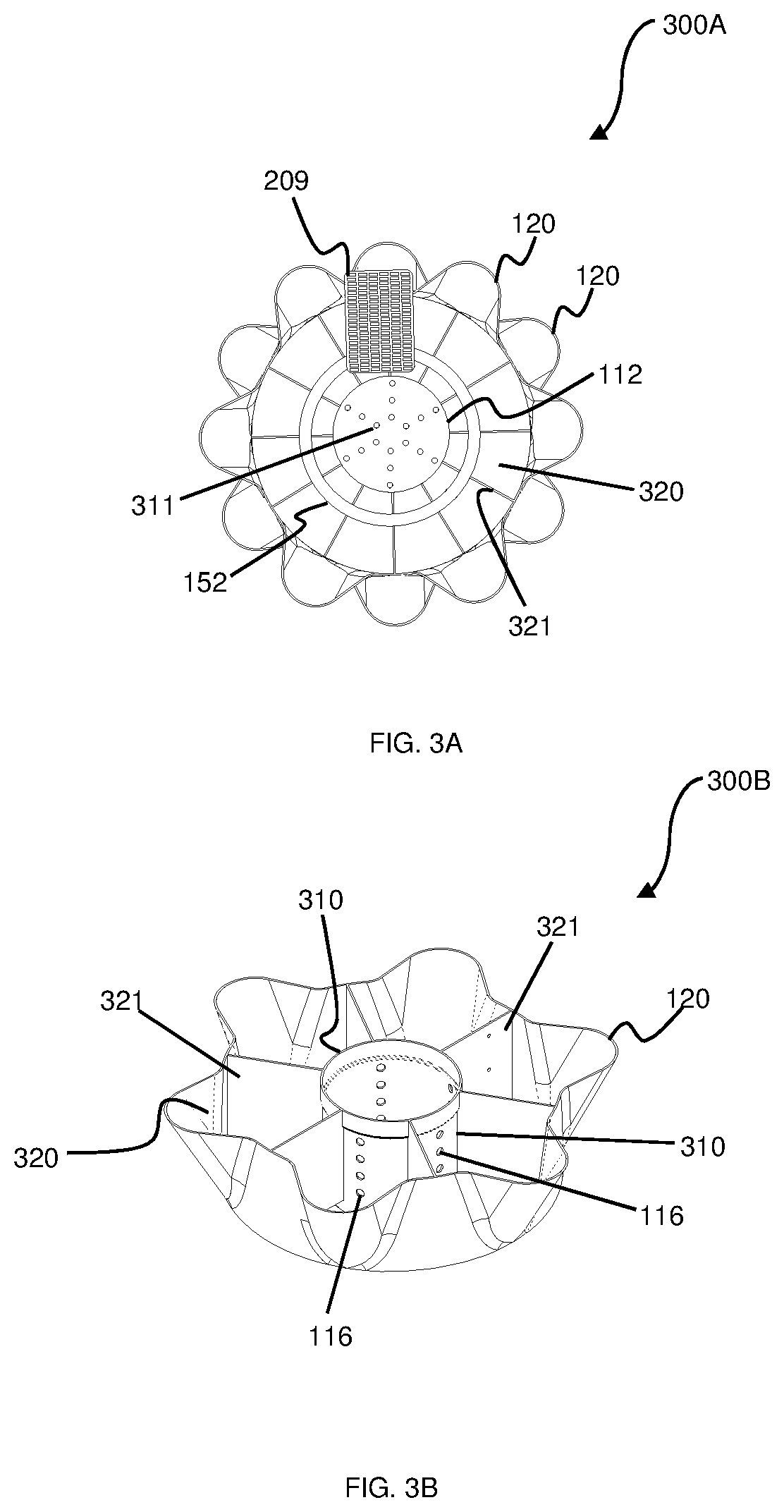Internet of things (IoT) biotower (BloTower#) system and process for recycling food wastes into nutrients for growing organic plants
a biotower and internet of things technology, applied in the field of biotowers, can solve the problems of inability to fully disintegrate inorganic waste, long decomposition of organic waste, and odor, and achieve the effect of convenient assembly and low cos
- Summary
- Abstract
- Description
- Claims
- Application Information
AI Technical Summary
Benefits of technology
Problems solved by technology
Method used
Image
Examples
Embodiment Construction
[0031]The invention is detail described with reference to the drawings provided as illustrative examples of the invention.
[0032]Referring now to FIG. 1 which presents an overview of an Internet of Things (IoT) bio-tower (BIoTower™) that encourages the separation and recycling of organic wastes such as food wastes, encourages the growth organic plants, and at the same time create a decorative green object healthy for the environment in accordance with an exemplary embodiment of the present invention is illustrated.
[0033]More particularly, FIG. 1 illustrates a schematic diagram of an Internet of Things (IoT) bio-tower (BIoTower™) 100 in accordance with an exemplary embodiment of the present invention. At the heart of BIoTower™100 is a food waste disposable tower 110, a multi-leveled carousels 120, and an Internet of Things (IoT) irrigation system including a water container 140, a water tube 151, ring sprinkler 152, a water pump 154, a motor 155, a water filter 156, a humidity and tem...
PUM
| Property | Measurement | Unit |
|---|---|---|
| circumference | aaaaa | aaaaa |
| humidity | aaaaa | aaaaa |
| temperature | aaaaa | aaaaa |
Abstract
Description
Claims
Application Information
 Login to View More
Login to View More - R&D
- Intellectual Property
- Life Sciences
- Materials
- Tech Scout
- Unparalleled Data Quality
- Higher Quality Content
- 60% Fewer Hallucinations
Browse by: Latest US Patents, China's latest patents, Technical Efficacy Thesaurus, Application Domain, Technology Topic, Popular Technical Reports.
© 2025 PatSnap. All rights reserved.Legal|Privacy policy|Modern Slavery Act Transparency Statement|Sitemap|About US| Contact US: help@patsnap.com



